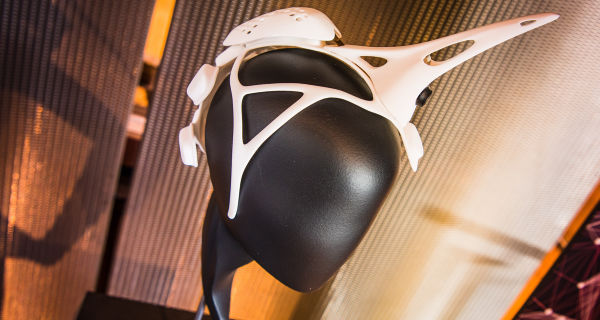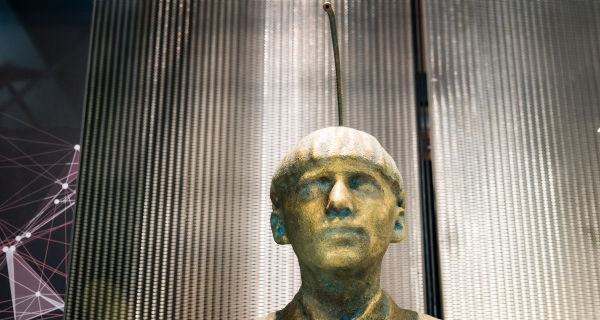Man and machine become one
Wearables are smart clothing articles into which minute, but powerful computer technology has been integrated. Researchers have been working on combining fashion with technology since the mid-1960s. Engineered fashion can be used in all sorts of areas in people’s lives.
Exoskeletons
With the help of artificial intelligence, robotic exoskeletons ease some of the burden of heavy physical labour in industrial production or help people with physical disabilities move about or use their senses. They can also monitor vital signs and adapt themselves to climatic conditions. The exhibits on display show how technology is moving closer and closer to and into the body.
Cyborg bust and spider dress
A bust of the first official recognised cyborg, Neil Harbisson, is on display as well. He is colour-blind and had an antenna implanted into his skull that enables him to hear colours.
The spider dress that was designed by Anouk Wipprecht and printed with 3D technology is on display. The dress is capable of making inferences about the emotions of the woman wearing the dress and communicating them to her environment as it reacts to outer stimuli with the help of movable extremities and marks off personal distance zones from other people.

